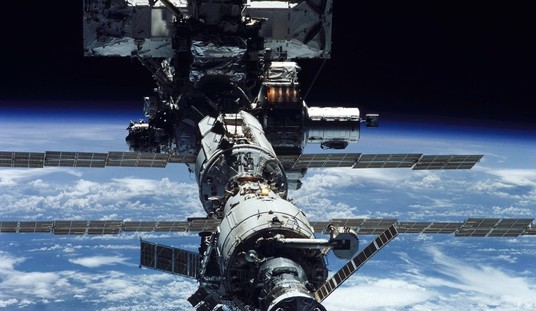Refugees fleeing the advancing Islamic State forces in western Iraq tell tales of savagery. The accounts have a number of common factors. A new report just issued by Amnesty International notes that the Islamic State has begun “a systematic campaign of ethnic cleansing” in northern Iraq. The report focuses on the actions taken by Islamic State forces against Yezidis living in the Sinjar mountain area of Iraq, close to the border with Syria. This area fell to IS in early August.
The Amnesty report lays bare a reality in which the Islamic State appears to be seeking to terminate the existence of non-Muslim religions on its soil. It describes, for example, two incidents that took place in the Yezidi villages of Qiniyeh and Kocho in mid-August. In both cases, the males of the villages — men and boys — were rounded up, forced into vehicles and then taken out of the villages and shot. Women, meanwhile, were abducted by the jihadis.
IS have established a slave market in Mosul, where women are sold for prices ranging from $5-25.
Christian and Yezidi places of worship and Shia mosques have been systematically vandalized or destroyed by the advancing Islamic State forces.
That the Islamic State is committing crimes against humanity is clear. What is less clear is the nature of the western policy toward the emergent jihadi state.
The U.S. response in Iraq, it should be said, has been firm. Very plainly, the administration drew a red line in front of Baghdad and the Kurdish capital of Erbil and made clear that the Islamic State would not be permitted to enter these areas. As a result, the IS advance on Erbil stopped 45 km from the city and remains stopped. The jihadis understood after the first U.S. airstrikes that if they attempted a rush for the city they would be wiped out from the air.
With the help of U.S. air power and special forces, the Kurds and the Iraqi army are now pushing the jihadis back from the easternmost of their conquests in Iraq. The Mosul Dam has been won back. The siege of Amerli has been lifted.
But its not quite clear what happens next. And there is a danger of goals being set which the west will not then seriously attempt to achieve. President Obama recently defined the goal of U.S. policy as to “degrade and destroy” IS. The Islamic State currently stretches from Mosul in Iraq all the way to Syria’s border with Turkey. It is hard to see how it could be destroyed by air power alone. It is also hard to identify a ground force among the myriad forces operating today in Iraq and Syria which could make a serious bid to destroy it on the ground.
So what does this mean? Is the president just talking, and will the Islamic State be permitted to continue in existence, at least west of the Syria-Iraq border? Or is it possible that when the president refers to creating the right “regional” situation to allow for the defeat of “ISIL” he is referring to the one power that potentially could organize a ground attack on the Islamic State? That country is the sponsor and ally of the two governments that exist to the west and to the east of the boundaries of the Islamic State — that is, the Assad regime to its west and the Baghdad government to its east.
The country in question is Iran, which has a clear interest in the destruction of the Islamic State. The IS domain, if it continues to exist, stands between Iran and its desire for a contiguous line of pro-Iranian entities between the Iraq-Iran border and the Mediterranean Sea. The problem is that an Iranian victory over IS would mean a general Iranian triumph in the Levant. That’s a bad outcome too.
The fighting in Amerli this week, in which Iraqi special forces and Shia militias helped by USAF air cover defeated IS forces may be an indication of what is to come. If so, the result will be to hand Iran a strategic victory in the Levant and Mesopotamia.
A policy of dual containment — strengthening reliable allies in Kurdistan, Jordan and Israel — to contain both Shia and Sunni Islamists should be the road map guiding western policy in this area today. The only alternative to this would be the entry of U.S. and allied ground forces to destroy the Islamic State. This is clearly not an option.
But a tacit alliance with Iran, in which western air power cooperates with Iran-supported, mainly Shia Islamist forces on the ground against ISIS would be among the worst possible options. It is possible that inertia or design is leading policy in this direction.
So it needs to be said clearly: The Islamic State and the Islamic Republic are both enemies of the west and of the peoples of the Mideast. Backing one against the other would be a disaster.









Join the conversation as a VIP Member